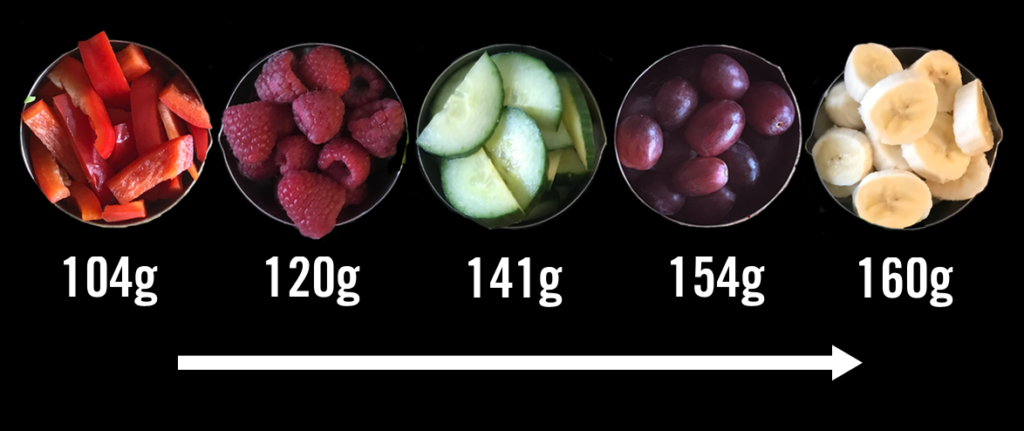How much should I be eating?
It's a common question that can be very controversial and usually followed by advanced solutions like counting calories and tracking macros.
The truth is it will vary from person to person. But here are some general guidelines on how to eyeball portions instead of weighting with a scale. You can still put together a well balanced meal without technology.
EStimate with your eyes
There’s no doubt using a scale to weigh and measure your food is the most accurate choice however it’s not always an option, nor is it necessary to weigh and measure everything.
Having the ability to estimate quantities when dining out or on the road can be quite useful.
A simple rule of thumb is that 1 cup of many fruits or vegetables is approximately 100g. (See exceptions below.) A closed fist is about the size of a cup.

IN exception too
Items like leafy greens and mashed potatoes would be considered an exception.
A good estimate for leafy greens is that a packed cup contains approximately 25g.
This means it may take a full plate of greens to get 100g. Conversely, a packed cup of sweet potatoes is 260g.

Put it on a plate!
When putting together meals, incorporate all 3 macros nutrients; carbs, proteins and fats to create a well balanced meal.
Avoid eating "naked" carbs, or carbs by themselves. Instead incorporate a form of fat to keep you satiated.
Instead of having an apple by itself, pair it with a nut butter. Add berries and granola to your yogurt so your full for a couple hours versus thirty minutes.
Men should aim for 2 fists worth of veggies, 2 palms worth of protein, 2 cupped hands of a starchy carb, and 2 thumbs worth of fat.
Women should aim for 1 fists worth of veggies, 1 palm of protein, 1 cupped hand of starchy carbs, and 1 thumb of fats.
